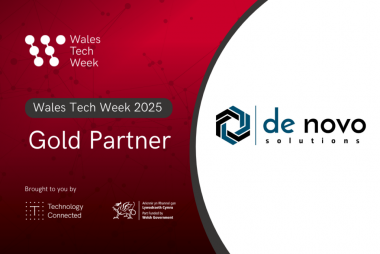de Novo Solutions Named Gold Partner for Wales Tech Week 2025
de Novo Solutions to showcase expertise in digital transformation as Gold Partner of Wales Tech Week 2025 Multi-award-winning Welsh technology company, de Novo Solutions, has been announced as the Gold Partner for premier international technology summit, Wales Tech Week 2025. Created and powered by Technology Connected, Wales Tech Week 2025 is taking place between 24th-26th November 2025…









